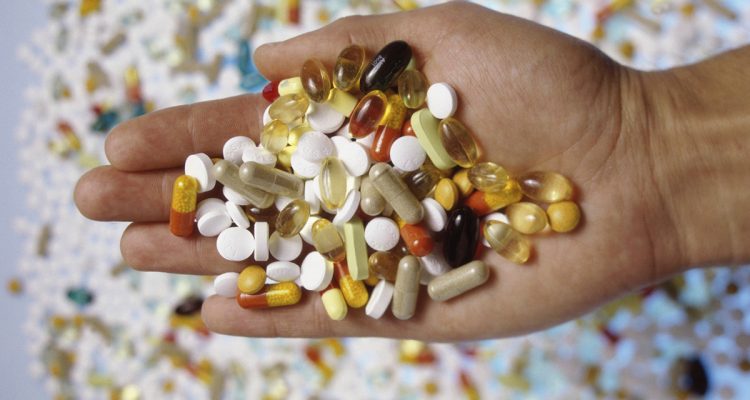Our handy guide breaks down some commonly used workout supplements to identify the good, the questionable and the better-left-on-the-shelf.
The arena of supplementation is not for the faint of heart or easily deterred. Instead, it’s a nearly $30 billion industry that’s expected to grow by a whopping $5 billion over the next three years.
It’s reached such capacity because we obsess about our fitness, which is healthy, and because we’re gullible in its pursuit, which is not. The latter is dangerous. The Federal Drug Administration doesn’t regulate supplements, so companies don’t have a watchdog looking over their shoulders ensuring they make a safe, effective product. It’s an environment ripe for swindlers.
But that doesn’t mean you should never enter. While some supplements may not live up to their lofty claims, others really do support the hard work you do at the gym or on the track. They can give you the energy for five more reps or make you just a twitch faster.
Of course, the best way to consume nutrients is through whole foods. “Don’t believe the Internet just because it says it’s good for you,” says Betsy Opyt, a registered dietitian at Healthy Concepts Consulting in Naples. “People think the answer is in a bottle, but there can be contaminants in there. That’s why I trust whole foods.”
Sometimes, however, eating to address your every health and fitness need isn’t feasible. That’s why we put together this guide to help you navigate the wide—and sometimes confusing—world of supplements. It includes a healthy option for many fitness goals, as well as a few of the bad and the just plain ineffective.
GENERAL HEALTH AND INJURY PREVENTION
Elk/deer velvet antler
What is it? A growth hormone called insulin-like growth factor 1 or IFG-1.
What is it supposed to do? Repair cartilage or tendon damage.
What does the research say? The treatment may sound strange, but it’s legit enough for Baltimore Ravens linebacker Ray Lewis, who allegedly used it to recover from a torn triceps muscle last season. However, a review of recent studies shows its supposed benefits for rheumatoid arthritis, sexual function and sports performance aren’t based on strong scientific evidence, though it shows promise for osteoarthritis sufferers.
Probiotics
What is it supposed to do? Treat diarrhea and irritable bowel.
What does the research say? Since the mid-1990s, study after study has shown that these natural bacteria can treat gastrointestinal problems, postpone allergies in kids and “prevent vaginal and urinary infections in women,” according to Harvard Health.
Vitamin D
What is it? Fat-soluble vitamin.
What is it supposed to do? A variety of things, including make and keep strong bones.
What does the research say? The body stores vitamin D and creates it when skin is exposed to sunlight. Its most well known benefit is building a strong skeleton, but it also repels SAD—seasonal affective disorder—during the winter months. Research suggests it may lower the chances of getting some cancers.
LEAN MUSCLE
Conjugated linoleic acid (CLA)
What is it? Polyunsaturated fatty acid found in meat and milk.
What is it supposed to do? Lose weight and build muscle by increasing your metabolism, battling cancer and diabetes.
What does the research say? Most of the positive results in CLA research have been in test-tube and animal studies. In humans, it has shown a modest effect on body fat, but it also poses safety risks, such as diabetes and increased size of liver and spleen. Get your CLA from the meat you eat and the milk you drink.
Synephrine
What is it? Citrus extract from the citrus aurantium plant.
What is it supposed to do? Similar to ephedrine, which is banned by the Federal Drug Administration, it’s a dietary supplement for weight loss.
What does the research say? Synephrine induces weight loss by increasing the metabolic rate through a process called beta-adrenergic agonism. However, most studies have only tested it as part of a mixture. As one literature review stated, “Unless and until the short- and long-term safety and efficacy of C. aurantium extracts are established, consumers should be advised to avoid C. aurantium-containing weight-loss products.”
Whey protein
What is it? One of the two major groups of proteins in milk.
What is it supposed to do? Increase muscle size and strength.
What does the research say? Whey protein delivers all nine of the amino acids people need from their diets, increasing muscle synthesis. It not only improves muscle strength and size, but the faster you consume it following resistance training, the more effective its results.
MUSCLE MASS
Creatine
What is it? A naturally occurring amino acid found in meat and fish and produced by the human liver, kidney and pancreas.
What is it supposed to do? Provide increased energy in muscles.
What does the research say? Creatine is converted into creatine phosphate, which is stored in muscles and turned into ATP, a major source of energy for the body, during high-intensity, short duration workouts. But it only works if you hit the gym—otherwise, you’re only gaining water weight.
Ribose
What is it? Simple carbohydrate the body makes from glucose, which becomes the main energy for cells.
What is it supposed to do? Billed as the new creatine, ups energy levels during intense workouts.
What does the research say? Though it can help patients suffering congestive heart failure or angina increase their exercise tolerance, studies are mixed on its benefits for lifting. Says one Baylor University study, “Results indicate that oral ribose supplementation does not affect anaerobic exercise capacity or metabolic markers.”
ENERGY (PRE-WORKOUT)
Arginine
What is it? Amino acid found in red meat, poultry, fish and dairy.
What is it supposed to do? Increase blood flow and, therefore, endurance.
What does the research say? Recent studies show that L-arginine, converted by the body into nitric oxide, which causes blood vessels to expand, doesn’t produce the side effects typically associated with nitric oxide synthesis, such as increased cardio performance and endurance.
Beta alanine
What is it? Non-essential amino acid that does not help build proteins. Found in meat and fish.
What is it supposed to do? Increase performance.
What does the research say? Oral consumption of beta alanine has been shown to increase the levels of carnosine, a dipeptide found in muscles. Carnosine loading has been proven to improve performance for both the trained and untrained. However, this is a relatively new supplement. Its potential side effects and the specific relationship between beta alanine and carnosine require more investigation.
RECOVERY (POST-WORKOUT)
Branched-chain amino acids (BCAAs)
What is it? Essential nutrient found in meat, dairy and legumes.
What is it supposed to do? Reduce muscle fatigue and soreness.
What does the research say? Researchers began studying BCAAs in the 1980s, believing its metabolism might increase performance. Those results failed. But it did decrease exercise-induced muscle damage and recovery. It also delays soreness. “It is possible to consider the BCAA as a useful supplement for muscle recovery and immune regulation for sports events,” according to a 2009 study.
Glutamine
What is it? The most abundant amino acid in the body.
What is it supposed to do? During high levels of stress, the body injects cortisol into the bloodstream, lowering glutamine levels and increasing the chance of illness.
What does the research say? Typically, your body makes enough, and you can increase glutamine levels through dietary means. However, some experts contend that extreme exertions, such as marathons, increase athletes’ chances of getting ill. But if your workout is only moderate in intensity, glutamine probably isn’t necessary.
By: Spencer Campbell

